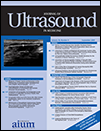High-Resolution Sonography Is Effective in Detection of Soft Tissue Foreign Bodies
Experience From a Rural Indian Center
Abstract
Objective. Patients with penetrating trauma or field injuries are commonly encountered by emergency physicians. Clinical examination by inspection or palpation can detect superficial foreign bodies (FBs), and radiographs can detect radiopaque FBs. However, soft tissue FBs can be easily missed. The aim of our series was to evaluate the role of high-resolution sonography in detection of soft tissue FBs. Methods. All patients referred to our center for sonographic evaluation of suspected soft tissue FBs from 1999 to 2008 were included in this analysis. Patients were scanned with an ultrasound machine using a 7.5-MHz transducer. The suspected area was scanned in both axial and sagittal planes. The nature of the FB, length, and depth from the surface were recorded and reported. The presence of an FB was confirmed by surgical excision. Results. During the study period, 123 patients underwent sonography for a suspected FB, of which 12 were lost to follow-up and excluded from the analysis. The study group included 73.8% male patients; the mean age was 36.2 years. Wood fragments and wooden thorns were the most frequently observed FBs, at 46.2% and 36.2%, respectively. The surgeon was satisfied with the reported depth of the FB from the surface in most cases (89%). The overall sensitivity and specificity of sonography were 94.5% and 53.8%. Conclusions. High-resolution sonography is a very sensitive tool in diagnosis of soft tissue FBs. It also helps the surgeon with accurate localization, permitting easy removal.




